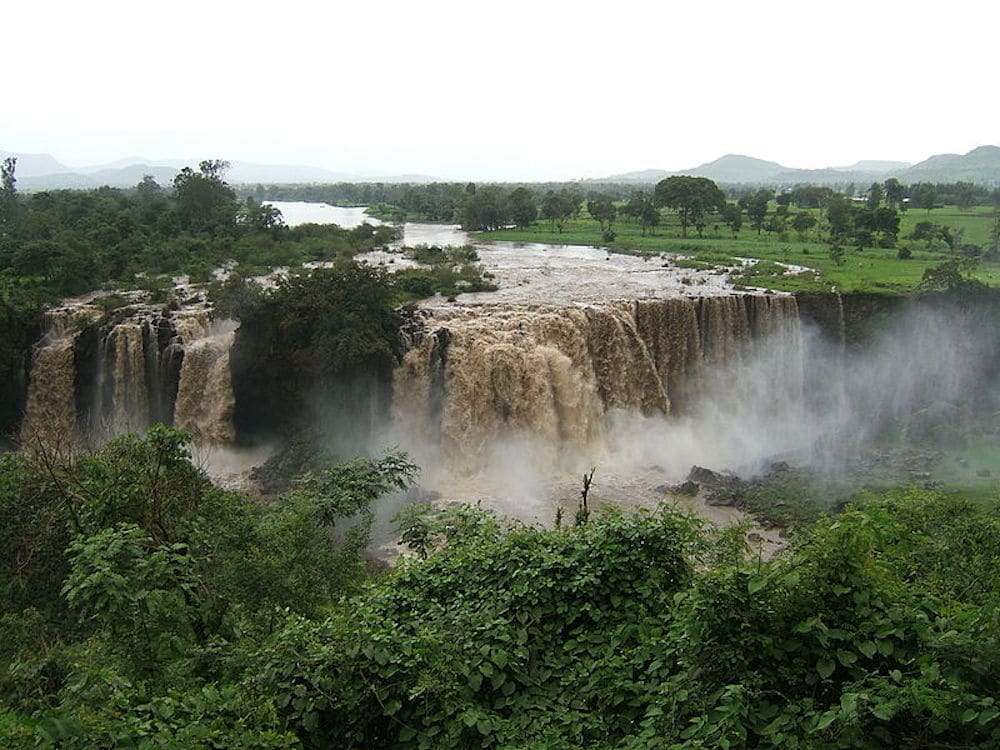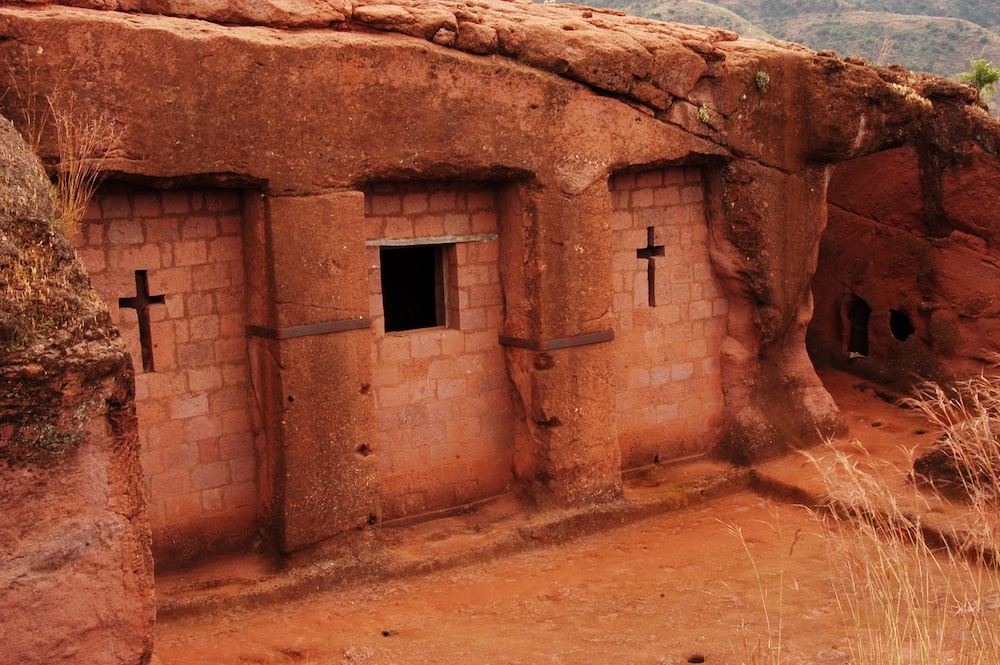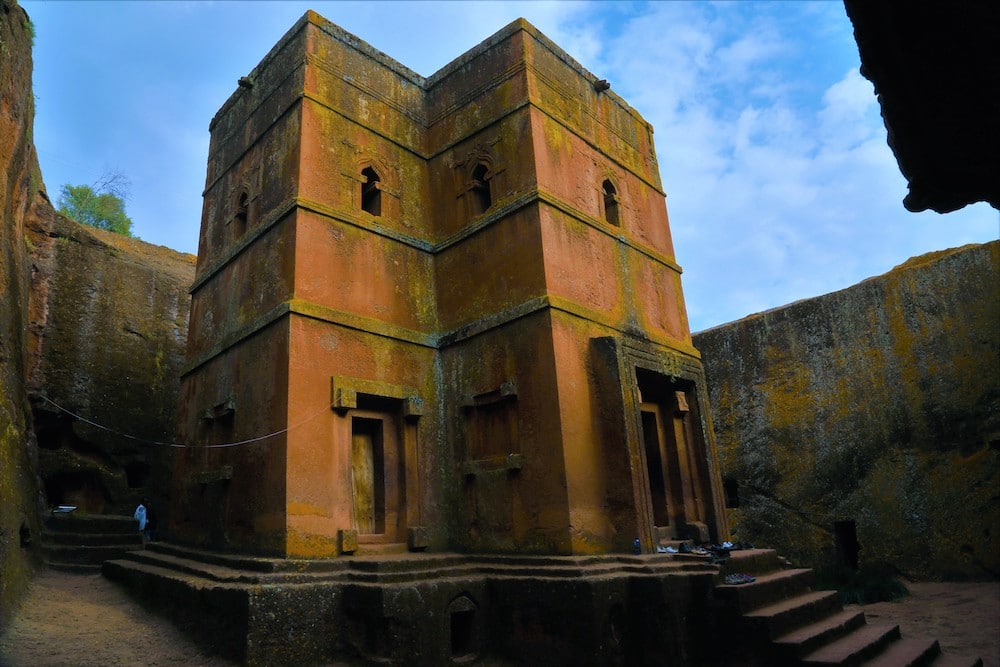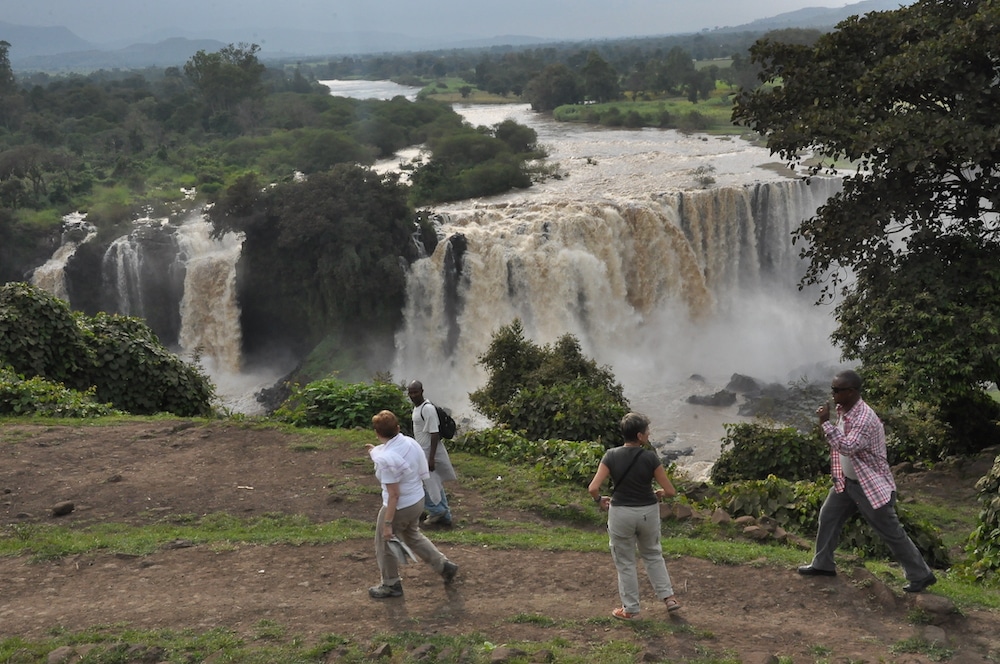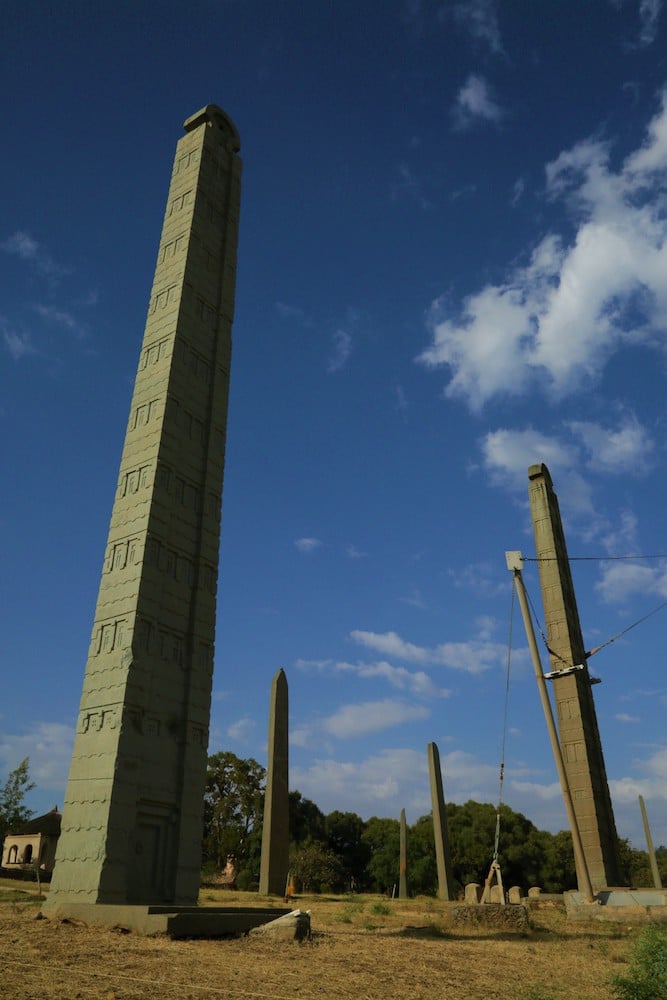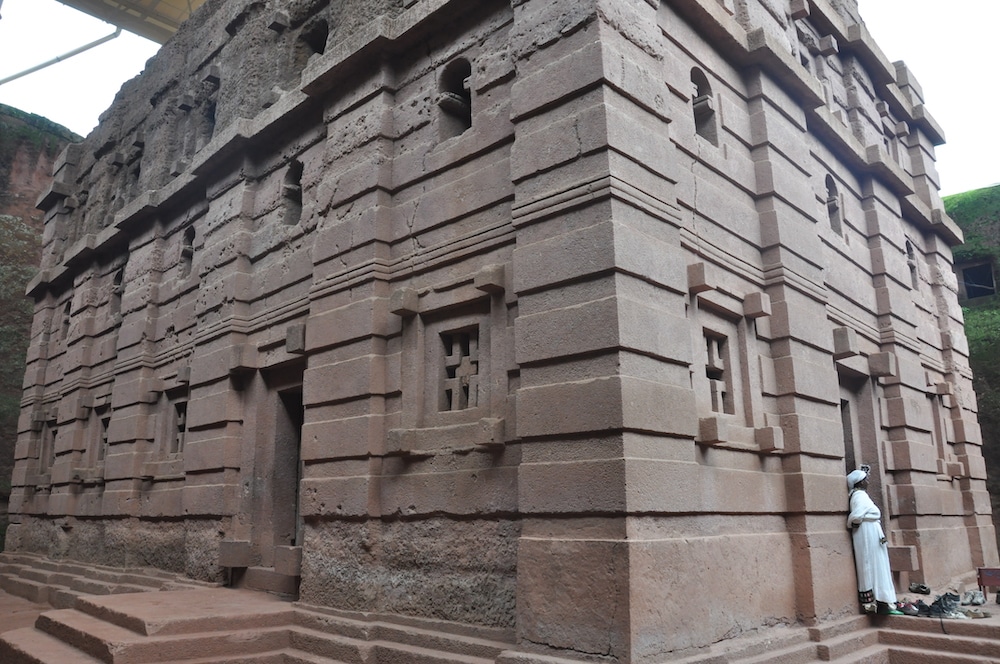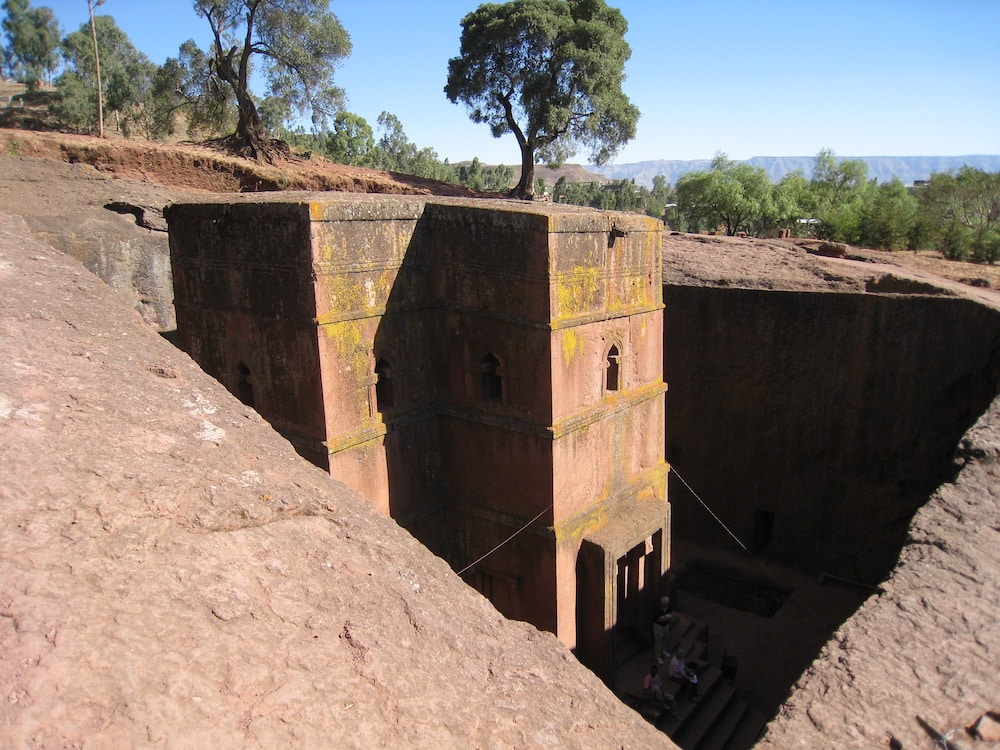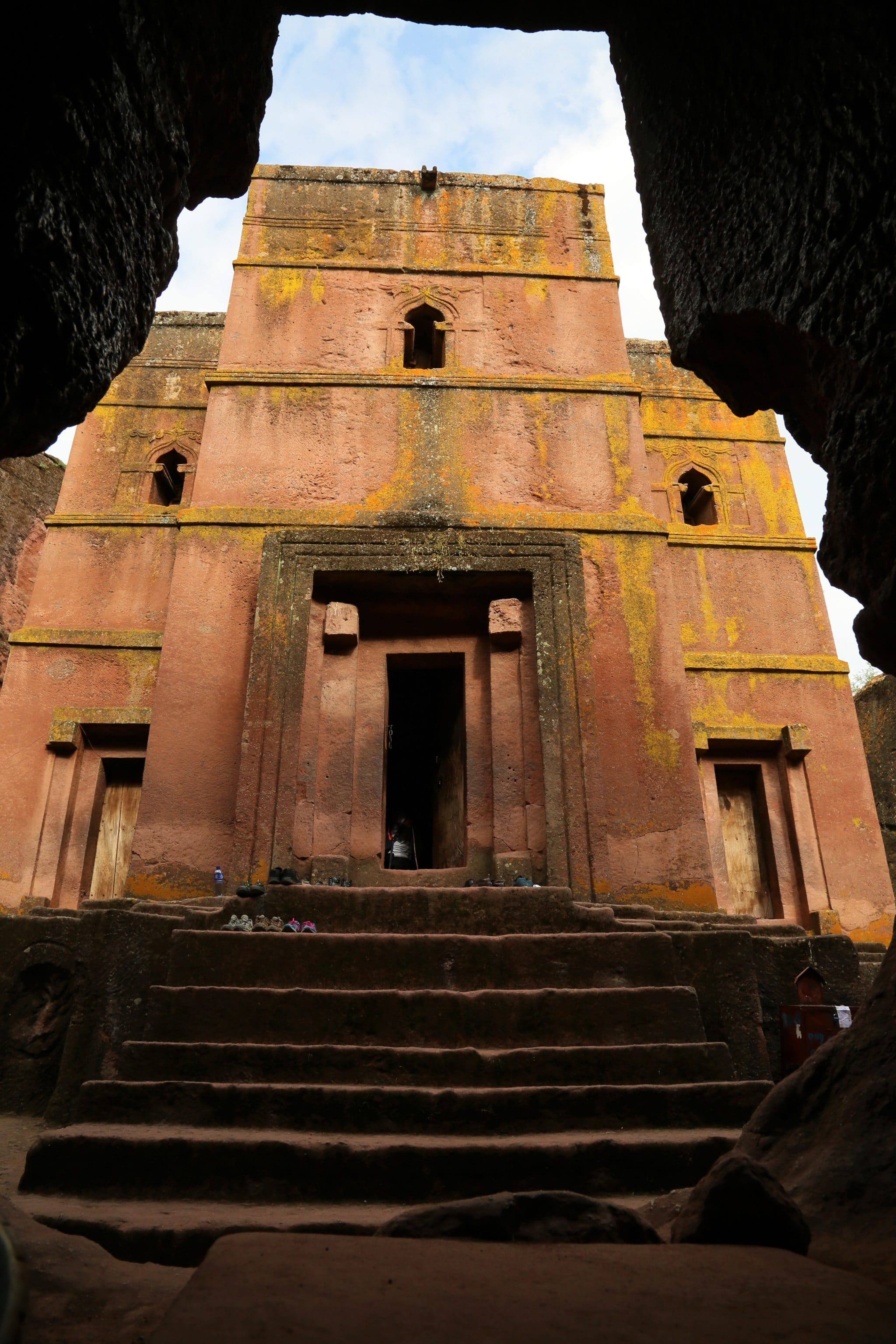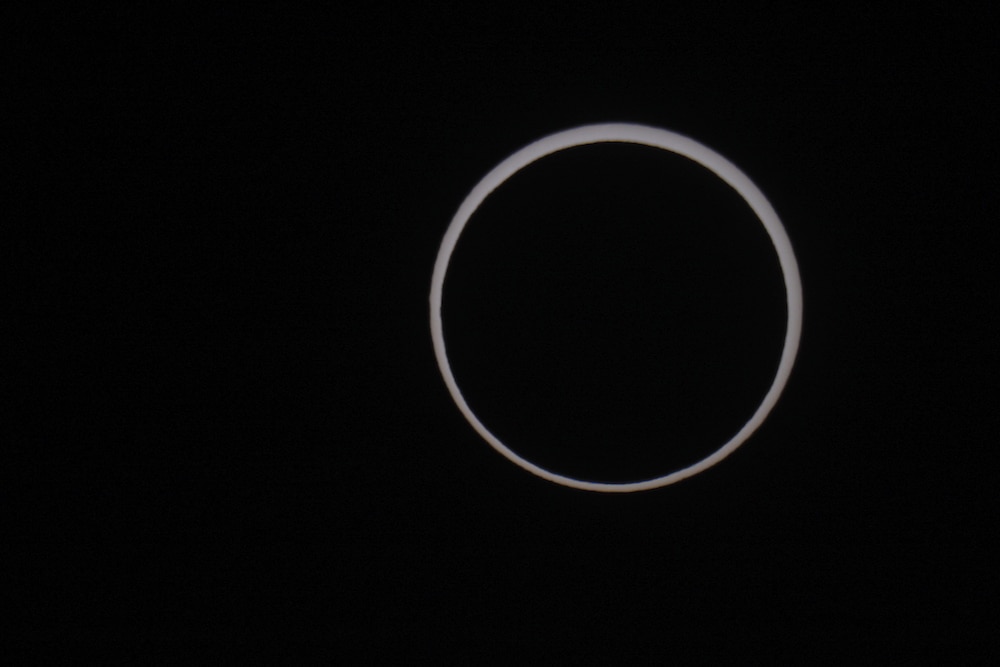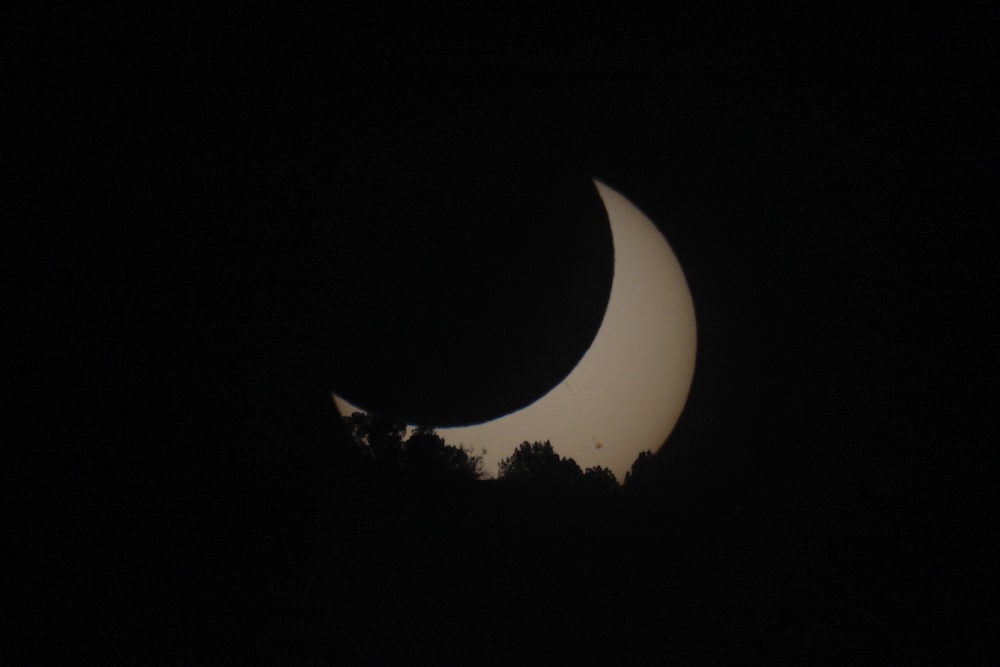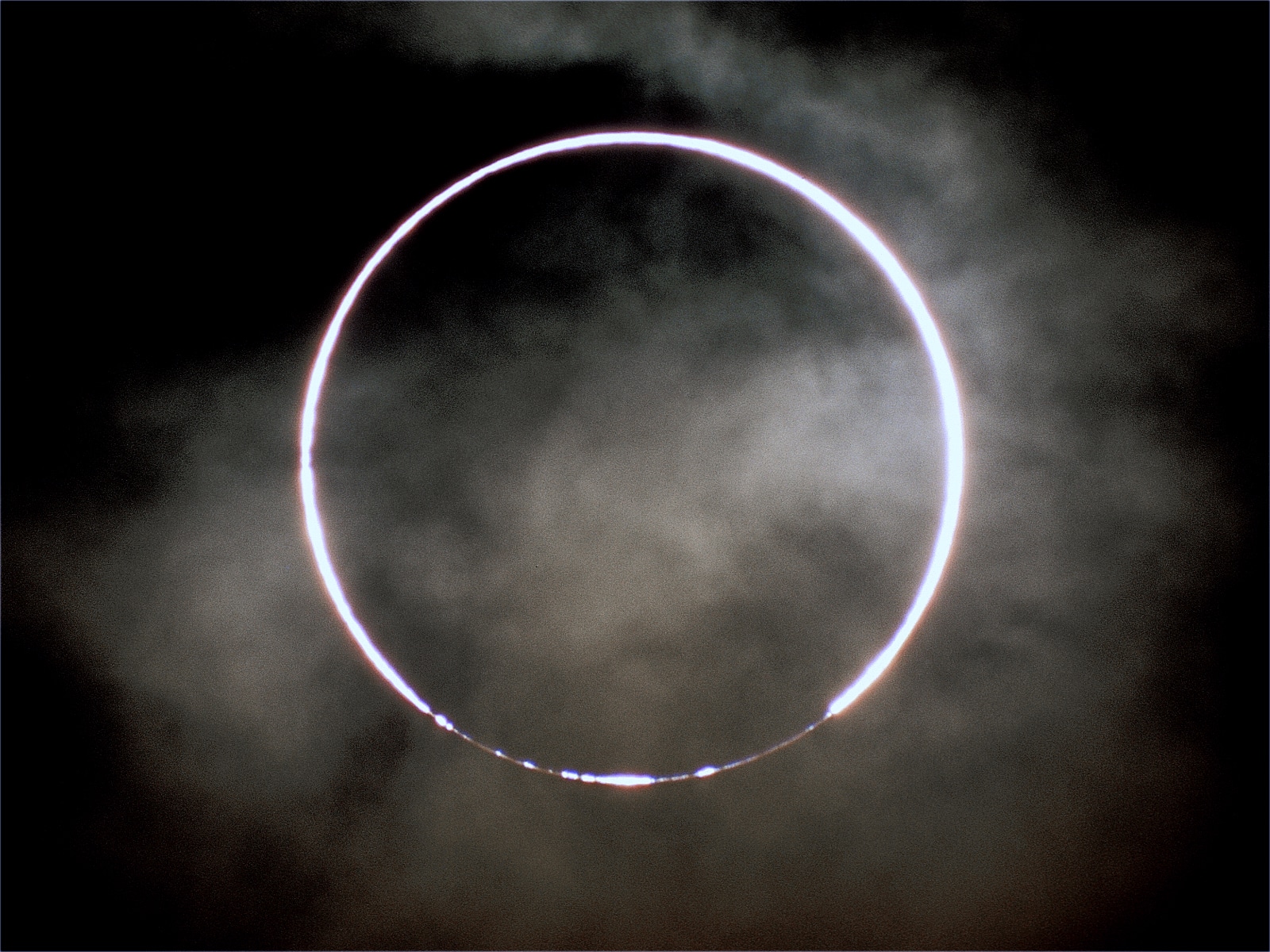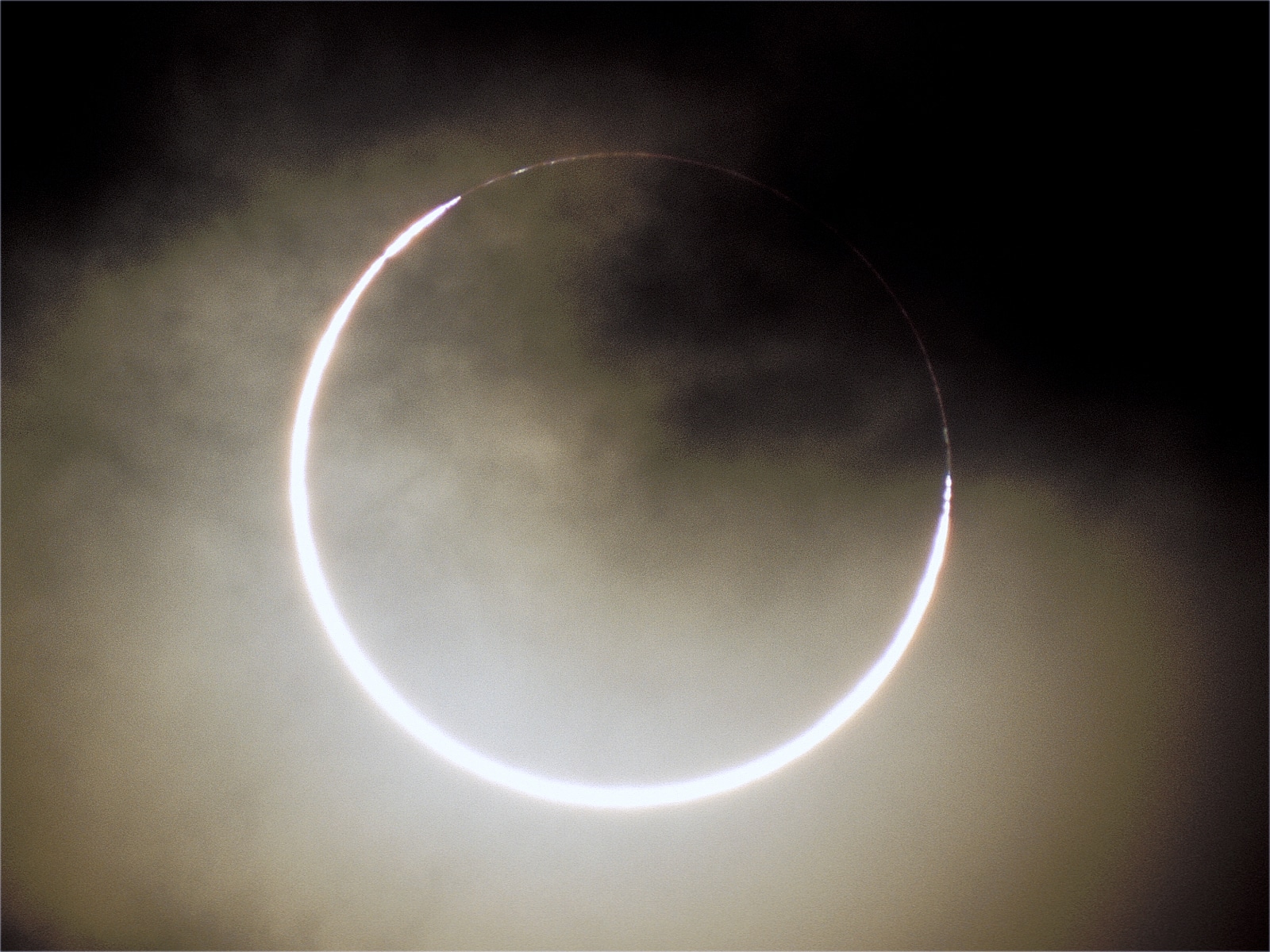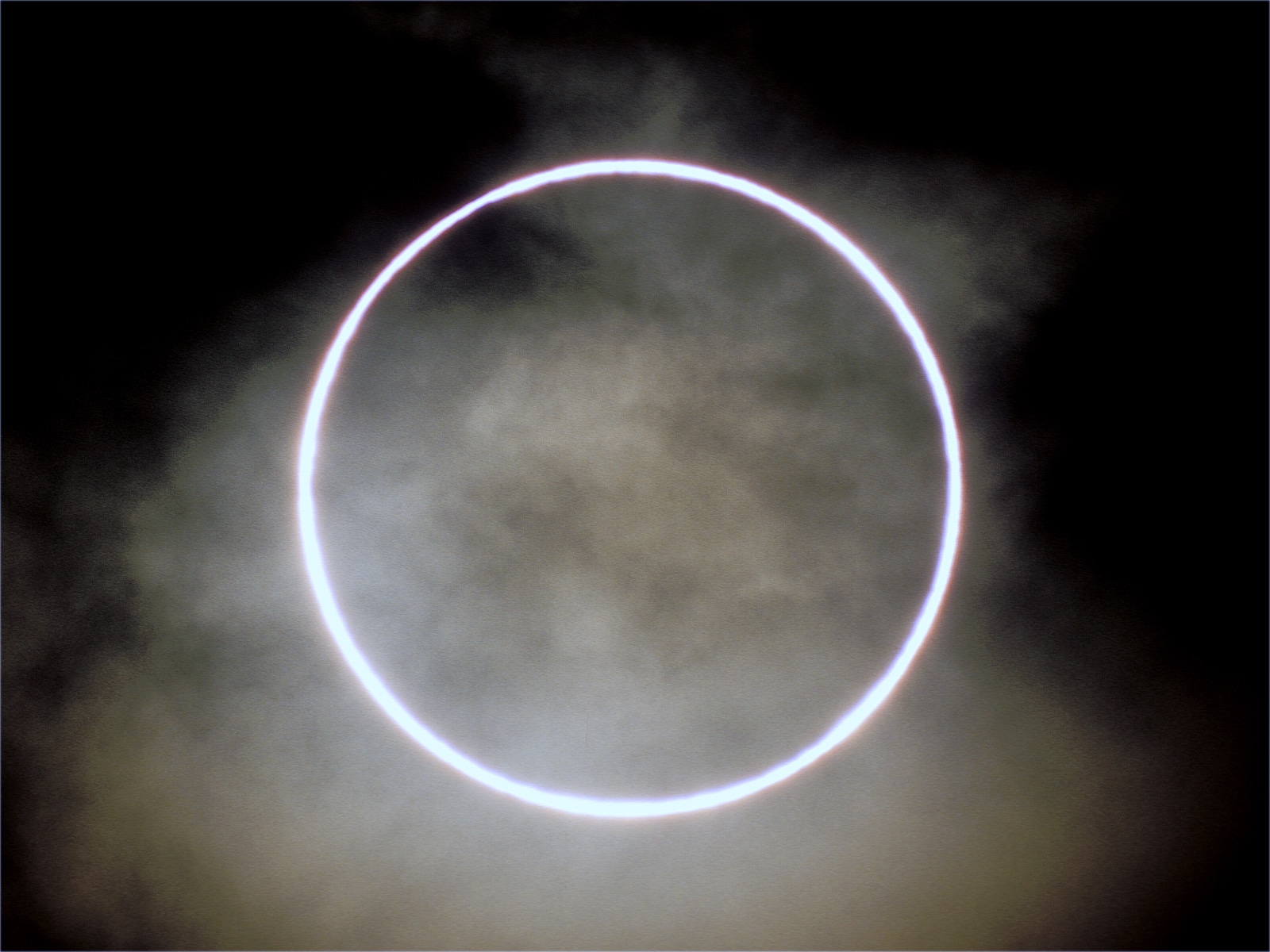Eclipse day has finally arrived. Rising early, we make our way to TravelQuest’s expertly selected viewing site, ready to take in the full spectacle (see box). Afterward, you can reflect on the experience over lunch and traditional coffee with our local friends – and then enjoy the rest of the day at your leisure.
Annular Eclipses 101
By eclipse meteorologist Jay Anderson
What is an Annular Eclipse?
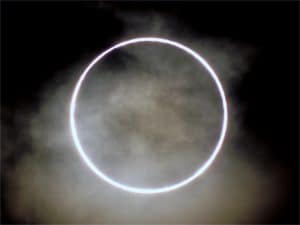
Solar eclipses come in three flavors. The first is a partial eclipse in which the Moon covers only a segment of the Sun; it’s visible over a large area of the Earth and is not particularly remarkable. The other two flavors are both “central eclipses” in which the Moon passes directly across the Sun. To see these very special eclipses at their best, you need to place yourself within their narrow shadow tracks across the Earth’s surface. Each type of central eclipse has its own set of attractions. In one case, the Moon is relatively close to the Earth; it covers the Sun completely, giving us the spectacle of a total eclipse in which all of the normally hidden features of the Sun are revealed to viewers for a few precious minutes. In the other type, the Moon is at a more distant part of its orbit and cannot completely cover the solar disk. Instead it forms a ring of light in the sky – an annulus – that is captivating for the watchers below. Although annular eclipses are slightly more common than total eclipses, they are still elusive – unless you’re willing to travel to experience them. The 2020 annular eclipse is especially intriguing. The Moon will be nearly the same size as the Sun in the sky, and so the annulus will be very narrow – just shy of a total eclipse. Phenomena that are only fleetingly visible during a total eclipse will linger and wrap themselves around the edge of the dark Moon. Beads of sunlight, shining through valleys on the limb of the Moon, will form an extended necklace, as brilliant as diamonds against the darkening sky. The impossibly red hues of the chromosphere, the Sun’s shallowest atmospheric layer, will form a ruby ribbon that unites the sunlight beads along the lunar edge. The Sun’s extended atmosphere, the corona, will briefly come into view when the Moon begins to cover and then uncovers the solar disk. On the ground, if atmospheric conditions are just right, the narrow crescent will reveal dramatic displays of shadow bands.
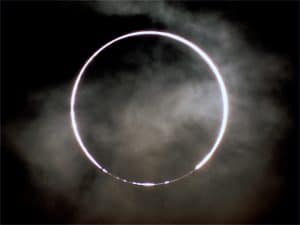
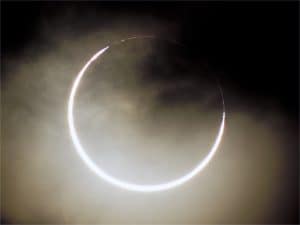
Because some portion of the solar disk is visible throughout an annular eclipse, your eyes must be protected at all times. When you use special viewing glasses, the dim corona and chromosphere are not visible; we’ll leave that to our cameras, checking the results when the eclipse is over. On the other hand, the dynamic performance of the beads and the play of light through the lunar valleys is readily apparent throughout the event and easy to follow. An annular eclipse may not quite equal the drama of totality, but it nevertheless creates its own excitement as one of nature’s true spectacles.
Annular eclipse viewing prospects at Lalibela, Ethiopia
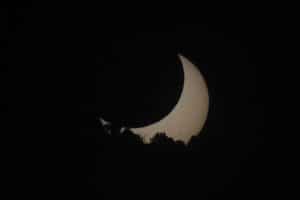
The 2020 annular solar eclipse is special: a one-minute event so close to total (99.2% to be exact) that it will be possible to capture prominences, the chromosphere and some corona with a camera, while viewers with eye protection will see a profusion of beads rotating around the lunar limb. The path of the eclipse stretches from Central Africa to Guam – a significant swathe of the Earth, but one plagued by oppressive humidity, searing heat, hazy and dusty skies, and the thin air of high-altitude plateaus. Only one location stands out for a comfortable, convenient eclipse view: the Ethiopian Highlands and, in particular, the city of Lalibela. Ideally situated on the central line of the eclipse path, Lalibela has an elevation of 2,590 m (8,500 ft), well above the heat and humidity of the tropics. And while sunshine is not as abundant on the Ethiopian Highlands plateau as it is over the deserts of Arabia and Pakistan, it is nonetheless generous. Most clouds are convective in nature and tend to dissipate as the temperature falls ahead of the eclipse; but because the eclipse comes during the morning hours, around 8:00 a.m. local time, the clouds will be in the early stages of their growth. Satellite photos from the past 18 years show that such an eclipse would have been visible in 14 of them.
DATE(S): Sunday, June 21, 2020
MEALS: Breakfast / Lunch / Dinner
ACCOMMODATION: Zagwe hotel or similar
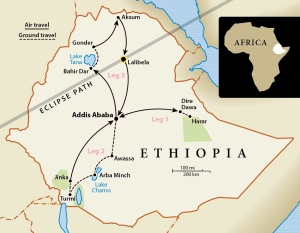 Many of us first discovered the rich culture and haunting landscapes of Ethiopia long ago, through the pages of National Geographic magazine, when it remained a uniquely mysterious corner of the modern world. Even today, this vast land in northeast Africa is the only nation on the continent never colonized by Europeans and is still largely unexplored by travelers.
Many of us first discovered the rich culture and haunting landscapes of Ethiopia long ago, through the pages of National Geographic magazine, when it remained a uniquely mysterious corner of the modern world. Even today, this vast land in northeast Africa is the only nation on the continent never colonized by Europeans and is still largely unexplored by travelers.


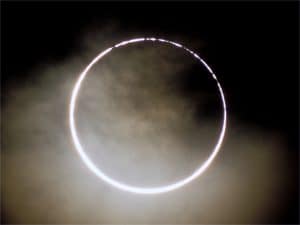

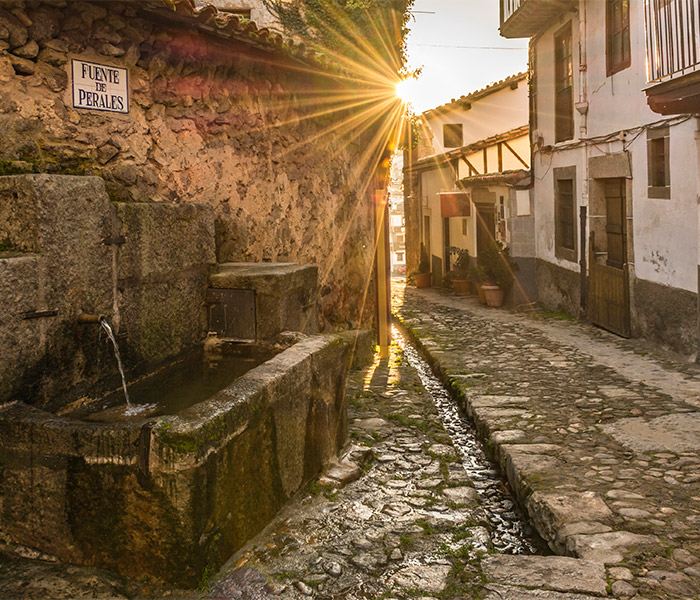

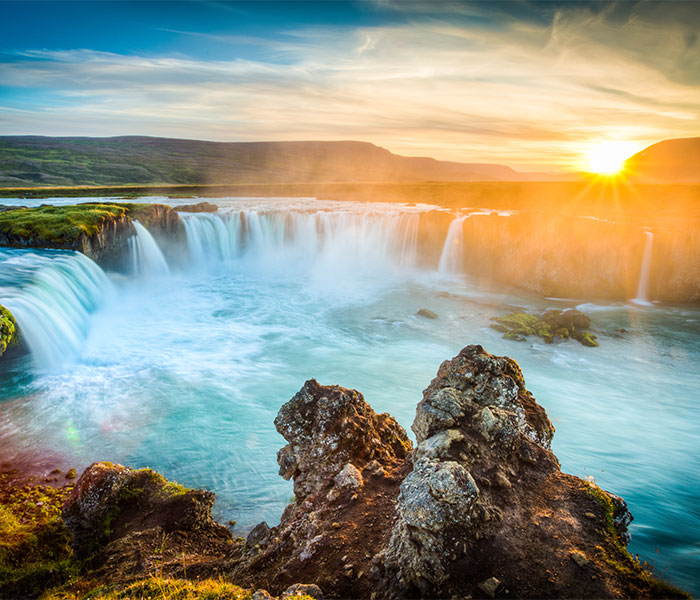









 After your early-morning arrival in Addis Ababa (airport code: ADD), you’re met by your TravelQuest representative for the quick transfer to our central hotel, where breakfast awaits you. Enjoy a driving tour of the city, including a visit to the National Museum of Ethiopia and a stroll through the Merkato, East Africa’s largest open-air market. After lunch we return to the hotel to check in; then you can relax for the rest of the afternoon and enjoy dinner on your own or with others in our group.
After your early-morning arrival in Addis Ababa (airport code: ADD), you’re met by your TravelQuest representative for the quick transfer to our central hotel, where breakfast awaits you. Enjoy a driving tour of the city, including a visit to the National Museum of Ethiopia and a stroll through the Merkato, East Africa’s largest open-air market. After lunch we return to the hotel to check in; then you can relax for the rest of the afternoon and enjoy dinner on your own or with others in our group. After breakfast, transfer to the airport for our flight to Dire Dawa, where we arrive in time for a lunch of authentic regional fare. In the afternoon we visit the Ethio-Djibouti Railway station, which dates from the late 1800s. Next, we journey to the colorful spice market at Kefira, a traditional open-air venue with camels, donkeys and two-wheeled horse carts. Then it’s on to the old walled town of Harar, our home for the night, where you can stroll the bustling marketplace with the region’s Amhara, Oromo and Adere (Harari) peoples.
After breakfast, transfer to the airport for our flight to Dire Dawa, where we arrive in time for a lunch of authentic regional fare. In the afternoon we visit the Ethio-Djibouti Railway station, which dates from the late 1800s. Next, we journey to the colorful spice market at Kefira, a traditional open-air venue with camels, donkeys and two-wheeled horse carts. Then it’s on to the old walled town of Harar, our home for the night, where you can stroll the bustling marketplace with the region’s Amhara, Oromo and Adere (Harari) peoples. Today is devoted to exploring Harar, Ethiopia’s medieval capital, regarded by many as the fourth holy city of Islam, next to Mecca, Medina and Jerusalem. Set on a plateau cut with deep gorges and surrounded by both desert and savannah, the city is protected by an encircling wall built in the 16th century by the Emir Nur ibn Mujahid. In addition to the fortifications and gates (a UNESCO World Heritage Site), we visit the former palace of Emperor Haile Selassie, as well as a traditional Harari village and the house of the renowned 19th-century French poet Arthur Rimbaud, who worked here as a coffee trader after giving up writing at age 21. In the evening we pay a visit to the Hyena Men, who make their living by collecting offal and bones from around the city, then inviting visitors to watch them feed wild hyenas – from their mouths. It’s an experience not soon forgotten!
Today is devoted to exploring Harar, Ethiopia’s medieval capital, regarded by many as the fourth holy city of Islam, next to Mecca, Medina and Jerusalem. Set on a plateau cut with deep gorges and surrounded by both desert and savannah, the city is protected by an encircling wall built in the 16th century by the Emir Nur ibn Mujahid. In addition to the fortifications and gates (a UNESCO World Heritage Site), we visit the former palace of Emperor Haile Selassie, as well as a traditional Harari village and the house of the renowned 19th-century French poet Arthur Rimbaud, who worked here as a coffee trader after giving up writing at age 21. In the evening we pay a visit to the Hyena Men, who make their living by collecting offal and bones from around the city, then inviting visitors to watch them feed wild hyenas – from their mouths. It’s an experience not soon forgotten! In the morning we visit Awassa’s famed fish market, the largest in Ethiopia, and then head southwest along the shores of Lake Abaya to the community of Chencha. Here you meet the Dorze people, once feared as warriors, and now renowned as weavers of fine cotton textiles – including their colorful robes, or shammas, which are popular throughout Ethiopia. The Dorze are also famous for their two-story “beehive” huts, which are constructed so skillfully from woven bamboo and enset (Ethiopian banana) that they last up to 80 years. Getting to know our Dorze hosts is a fascinating cultural experience, and the warmth of their welcome will stay with you as we carry on to our destination for tonight, the town of Arba Minch.
In the morning we visit Awassa’s famed fish market, the largest in Ethiopia, and then head southwest along the shores of Lake Abaya to the community of Chencha. Here you meet the Dorze people, once feared as warriors, and now renowned as weavers of fine cotton textiles – including their colorful robes, or shammas, which are popular throughout Ethiopia. The Dorze are also famous for their two-story “beehive” huts, which are constructed so skillfully from woven bamboo and enset (Ethiopian banana) that they last up to 80 years. Getting to know our Dorze hosts is a fascinating cultural experience, and the warmth of their welcome will stay with you as we carry on to our destination for tonight, the town of Arba Minch. Your morning begins with a boat ride on Lake Chamo, where you will likely spot hippos, great white pelicans and other species of water birds. Chamo also boasts one of the world’s most spectacular concentrations of giant crocodiles – to the point where locals call it “The Crocodile Market.” Driving southward, we stop at a remote village of the Konso people, set on a hillside among outcrops of basalt and protected by a network of stone-walled alleys. Then, further along the Omo Valley, we visit a Bena community, gaining a firsthand look at their unique way of life: most adults color their bodies with white chalk, and women string beads through their buttered hair while men wear colorful clay caps decorated with feathers. When we reach our final destination, an eco-lodge near the market town of Turmi, you can count on having plenty of vivid memories (with a camera full of images to match).
Your morning begins with a boat ride on Lake Chamo, where you will likely spot hippos, great white pelicans and other species of water birds. Chamo also boasts one of the world’s most spectacular concentrations of giant crocodiles – to the point where locals call it “The Crocodile Market.” Driving southward, we stop at a remote village of the Konso people, set on a hillside among outcrops of basalt and protected by a network of stone-walled alleys. Then, further along the Omo Valley, we visit a Bena community, gaining a firsthand look at their unique way of life: most adults color their bodies with white chalk, and women string beads through their buttered hair while men wear colorful clay caps decorated with feathers. When we reach our final destination, an eco-lodge near the market town of Turmi, you can count on having plenty of vivid memories (with a camera full of images to match).



 Today we conclude our journey through the Omo Valley with a visit to a village of the Ari people, who traditionally make their livelihoods growing grains, coffee, fruits and honey. If you’re interested in taking home a piece of pottery, there are many women artisans in the village – beautifully decked out in beads, bracelets and other jewelry, and wearing hand-woven enset (banana leaf) skirts. In the afternoon, we catch our return flight to Addis Ababa.
Today we conclude our journey through the Omo Valley with a visit to a village of the Ari people, who traditionally make their livelihoods growing grains, coffee, fruits and honey. If you’re interested in taking home a piece of pottery, there are many women artisans in the village – beautifully decked out in beads, bracelets and other jewelry, and wearing hand-woven enset (banana leaf) skirts. In the afternoon, we catch our return flight to Addis Ababa. After a morning flight to Bahir Dar, we head to Lake Tana, the largest in Ethiopia, whose many islands shelter churches of significant historical and cultural interest. Traveling by boat, we visit the monasteries of Ura-Kidane Mihret and Azwa-Mariam for a closer look at treasures of the Ethiopian Coptic Christians. And on the Zege Peninsula, you can stroll among coffee shrubs that were likely planted by early monks. The other highlight today is our visit to the Blue Nile Falls, one of the most spectacular in Africa, cascading 45 m (148 ft) across a 400 m (1,300 ft) span when the river is in full flood. It’s an easy half-hour walk to an outlook with spectacular views – and great bird watching. The gravel road in and out can be a bit rough, but the reward of viewing the falls is irreplaceable.
After a morning flight to Bahir Dar, we head to Lake Tana, the largest in Ethiopia, whose many islands shelter churches of significant historical and cultural interest. Traveling by boat, we visit the monasteries of Ura-Kidane Mihret and Azwa-Mariam for a closer look at treasures of the Ethiopian Coptic Christians. And on the Zege Peninsula, you can stroll among coffee shrubs that were likely planted by early monks. The other highlight today is our visit to the Blue Nile Falls, one of the most spectacular in Africa, cascading 45 m (148 ft) across a 400 m (1,300 ft) span when the river is in full flood. It’s an easy half-hour walk to an outlook with spectacular views – and great bird watching. The gravel road in and out can be a bit rough, but the reward of viewing the falls is irreplaceable. Today we journey overland to Gondar, Ethiopia’s capital from the 16th to the 18th century – often called the “the Camelot of Africa” by admirers of its six castles. The oldest and most magnificent is Fasiledes, named for the king who founded Gondar in 1632. Also remarkable is the Church of Debre Birhan Selassie, an imposing structure with brightly colored ceilings covered in intricately painted angels.
Today we journey overland to Gondar, Ethiopia’s capital from the 16th to the 18th century – often called the “the Camelot of Africa” by admirers of its six castles. The oldest and most magnificent is Fasiledes, named for the king who founded Gondar in 1632. Also remarkable is the Church of Debre Birhan Selassie, an imposing structure with brightly colored ceilings covered in intricately painted angels. This morning, we fly to the northern Ethiopian city of Axum. After an introduction to the region’s rich history at the archeological museum, we visit the famed Cathedral of St. Mary of Zion. Built from 1665 on foundations that likely date back a thousand years earlier, this is the oldest Christian site in Africa – with a guarded chapel that is said to house the Ark of the Covenant. The modern cathedral, built in the 1960s by Emperor Haile Selassie, presents a striking contrast to its ancient setting. Of course, the other focal point of our visit is Axum’s renowned stelae – more than 120 stone monuments dating from the 4th century and now protected as a UNESCO World Heritage Site. You can also walk among the ruins of various palaces and tombs, including the residence of the legendary Queen of Sheba, who may have lived here some 3,000 years ago.
This morning, we fly to the northern Ethiopian city of Axum. After an introduction to the region’s rich history at the archeological museum, we visit the famed Cathedral of St. Mary of Zion. Built from 1665 on foundations that likely date back a thousand years earlier, this is the oldest Christian site in Africa – with a guarded chapel that is said to house the Ark of the Covenant. The modern cathedral, built in the 1960s by Emperor Haile Selassie, presents a striking contrast to its ancient setting. Of course, the other focal point of our visit is Axum’s renowned stelae – more than 120 stone monuments dating from the 4th century and now protected as a UNESCO World Heritage Site. You can also walk among the ruins of various palaces and tombs, including the residence of the legendary Queen of Sheba, who may have lived here some 3,000 years ago.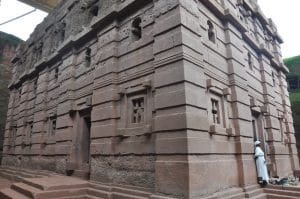 Our morning flight takes us to Lalibela, situated high in the Lasta Mountains at more than 2,500 m (8,500 ft) above sea level. This is arguably one of the most important religious sites in all of Africa, and indeed the entire Christian world. While there are at least 200 churches across the region, some of them hidden in enormous caves, Lalibela boasts 11 structures whose engineering and craftsmanship have rightly earned renown as true architectural wonders. Perhaps the most impressive is MedhaneAlem, the largest monolithic rock-hewn church in the world, with 72 carved pillars. Everywhere you explore among these magnificent buildings, you find a wealth of cultural treasures, from faded frescoes gracing the stone walls to elaborately carved details on the piers, capitals and arches.
Our morning flight takes us to Lalibela, situated high in the Lasta Mountains at more than 2,500 m (8,500 ft) above sea level. This is arguably one of the most important religious sites in all of Africa, and indeed the entire Christian world. While there are at least 200 churches across the region, some of them hidden in enormous caves, Lalibela boasts 11 structures whose engineering and craftsmanship have rightly earned renown as true architectural wonders. Perhaps the most impressive is MedhaneAlem, the largest monolithic rock-hewn church in the world, with 72 carved pillars. Everywhere you explore among these magnificent buildings, you find a wealth of cultural treasures, from faded frescoes gracing the stone walls to elaborately carved details on the piers, capitals and arches.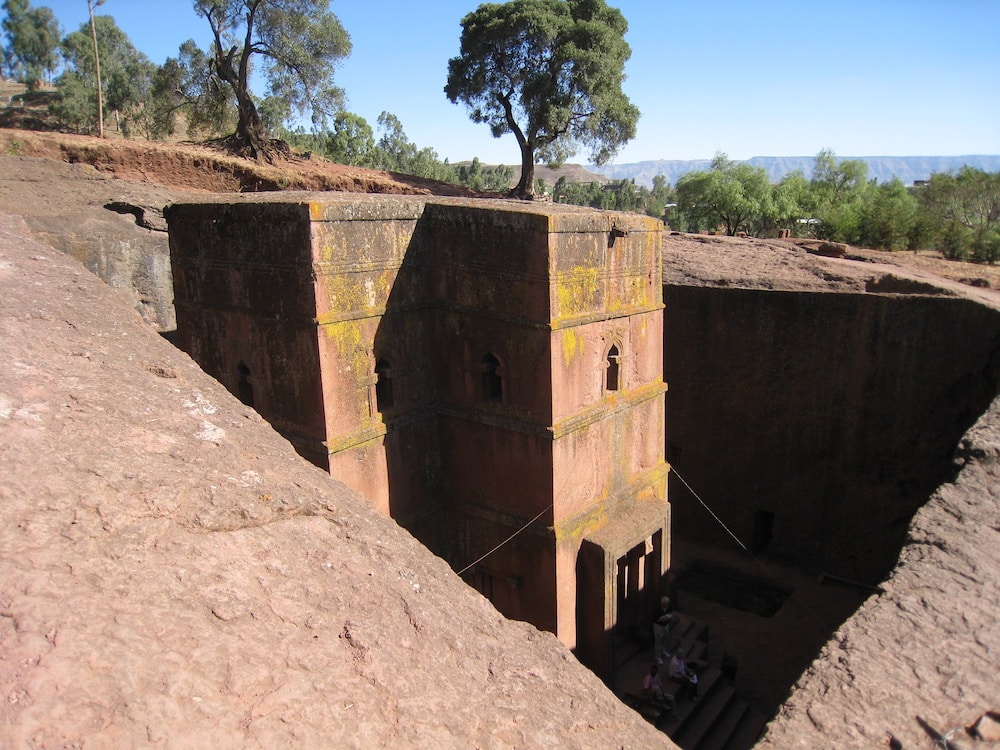
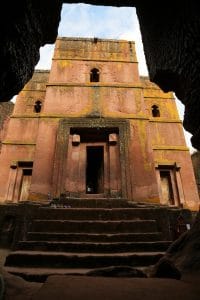




 After a late checkout, enjoy an expert-guided tour of Addis Ababa – including a visit to Holy Trinity Cathedral, a baroque-style Orthodox church that is the burial site of Emperor Haile Selassie, as well as many Ethiopians who resisted the Italian occupation during the 1930s. In the evening, join us for a farewell dinner at one of the best traditional restaurants in Addis, where we sample cuisine from around the country while enjoying folkloric dances and the music of various Ethiopian peoples. After dinner, it’s time to part ways following an amazing adventure together as we transfer you to the airport for your evening flight onward.
After a late checkout, enjoy an expert-guided tour of Addis Ababa – including a visit to Holy Trinity Cathedral, a baroque-style Orthodox church that is the burial site of Emperor Haile Selassie, as well as many Ethiopians who resisted the Italian occupation during the 1930s. In the evening, join us for a farewell dinner at one of the best traditional restaurants in Addis, where we sample cuisine from around the country while enjoying folkloric dances and the music of various Ethiopian peoples. After dinner, it’s time to part ways following an amazing adventure together as we transfer you to the airport for your evening flight onward.



